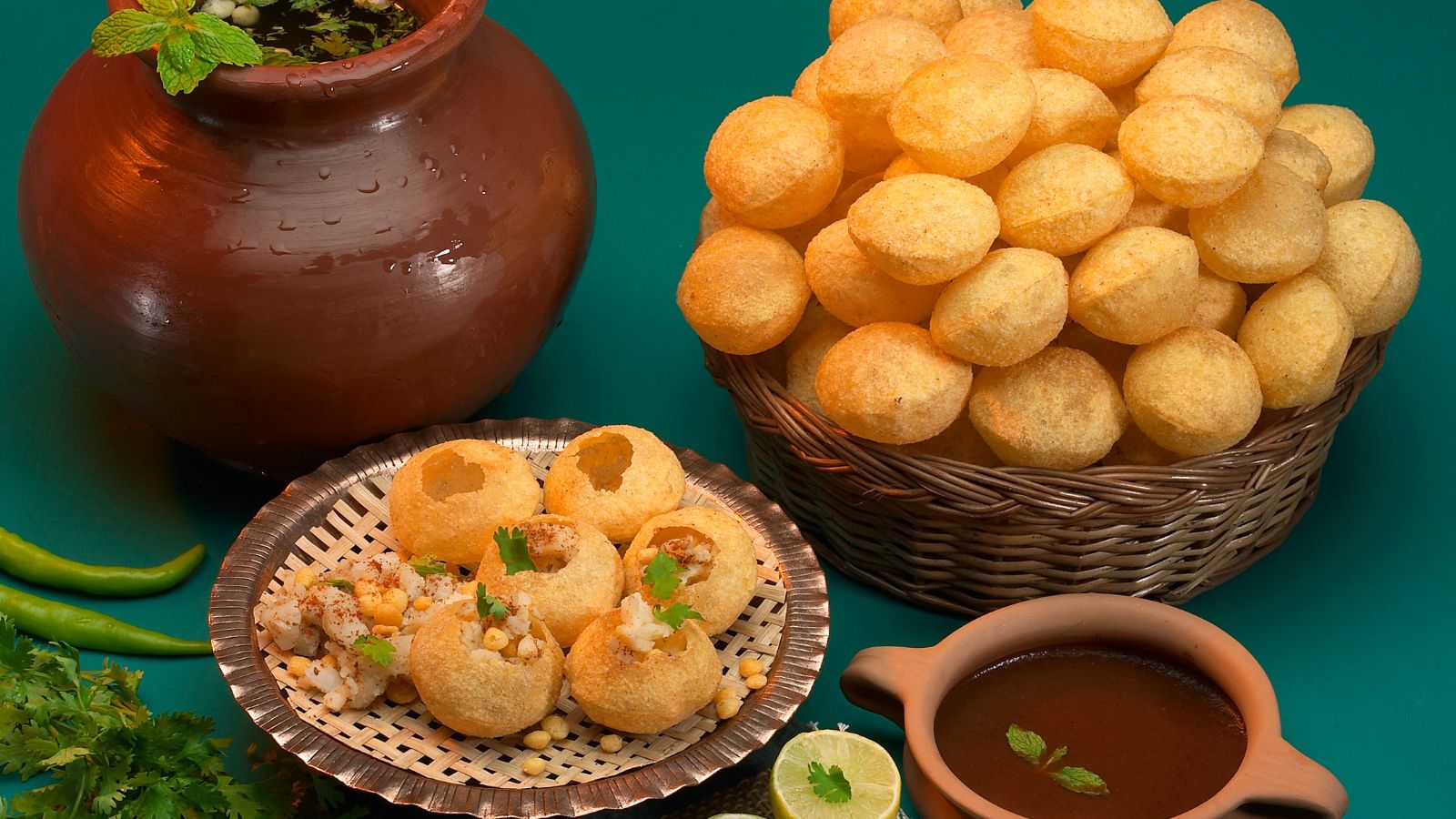Pani puri, known as gol gappe in North India, phuchka in Bengal, gupchup in Odisha and Chhattisgarh, is one of the most savored street foods in the Indian subcontinent. These small, crisp puris are filled with spicy water, tamarind chutney, potato or chickpea mash.
Legend has it that pani puri traces its origins back to the Mahabharata. After Draupadi married the Pandavas, Kunti wanted to test the new bride’s resourcefulness. She handed Draupadi a small quantity of leftover dough and some potatoes and asked her to prepare a meal for all five husbands. Draupadi rolled the dough into tiny, hollow balls, fried them until crisp, and filled them with the spiced potato mixture. This inventive dish not only impressed Kunti but is also believed to have sown the seeds for what we now enjoy as pani puri. While this story is popular, historians view it as folklore and suggest that the snack represents ingenuity in the kitchen rather than an actual event.
Beyond the legend, historical evidence traces pani puri’s ancestor to the ancient Magadha kingdom (in present-day Bihar), where an early version known as “phulki” was a popular snack. Key ingredients such as potatoes and chilies arrived in India centuries later from South America. This suggests while the method of frying hollow puris is ancient, modern pani puri evolved as different regions adapted the dish to their local tastes and available ingredients. Patrons love the experience of standing at local vendor, savoring piece after piece, each customized to their perfect blend of spice and tang.



